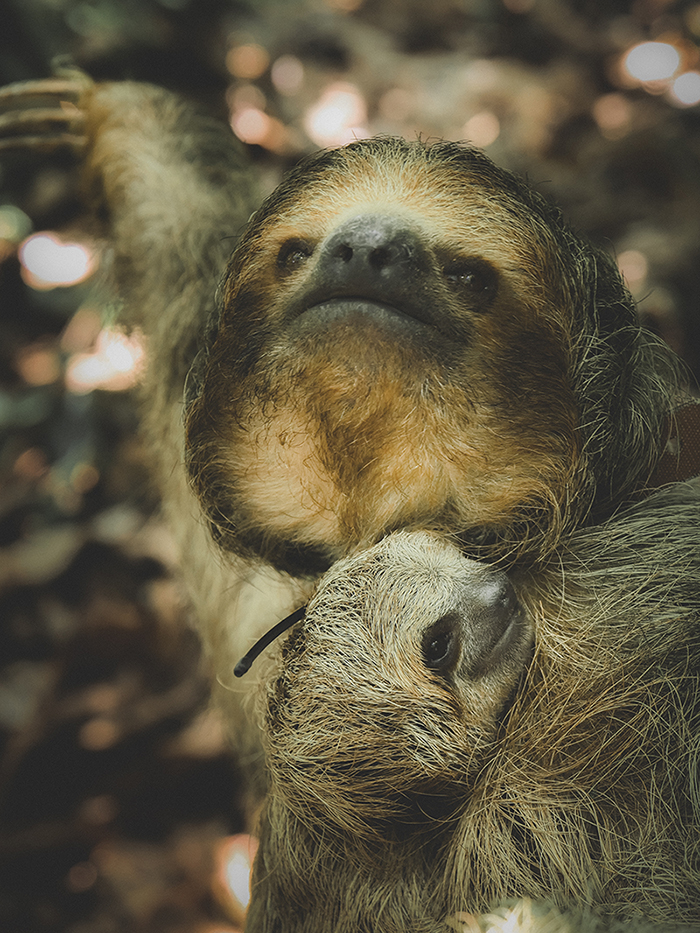
Why Sustainability and Environmentalism Is So Important in Costa Rica
At Chestnut Hill Farms, we take pride in the process. We take time to prepare the earth for planting, to harvest by hand, and to make sure our people and our environment are protected – all while producing the perfect pineapple. That includes caring for over 275 hectares of natural rainforest that surrounds our farm, offsetting our carbon footprint and giving a home to just some of the amazing wildlife that lives here in Costa Rica. Despite representing only .3% of the world’s total surface area, our beautiful country is home to 5% of its biodiversity. From birds and sloths to tapirs and jaguars, our rainforests host an impressive variety of animals. To get to know some of our animal neighbors, read on.
Costa Rica’s Sloths
With a population of 5 million sloths, it’s no surprise that these unique furry creatures draw many tourists to Costa Rica. The country is home to two of the world’s six sloth species: Hoffman’s Two-toed Sloth and the Brown-throated Sloth. Sloths generally live in the rainforest, making deforestation a growing threat to the population. This is just one of the reasons that we work to preserve the rainforest that surrounds our farm, offering a home to these sweet slowpokes. In exchange, we often get to spot the sloths hanging out in trees nearby, like this one photographed by Chestnut Hill Farms Farm Manager Didier Castro.
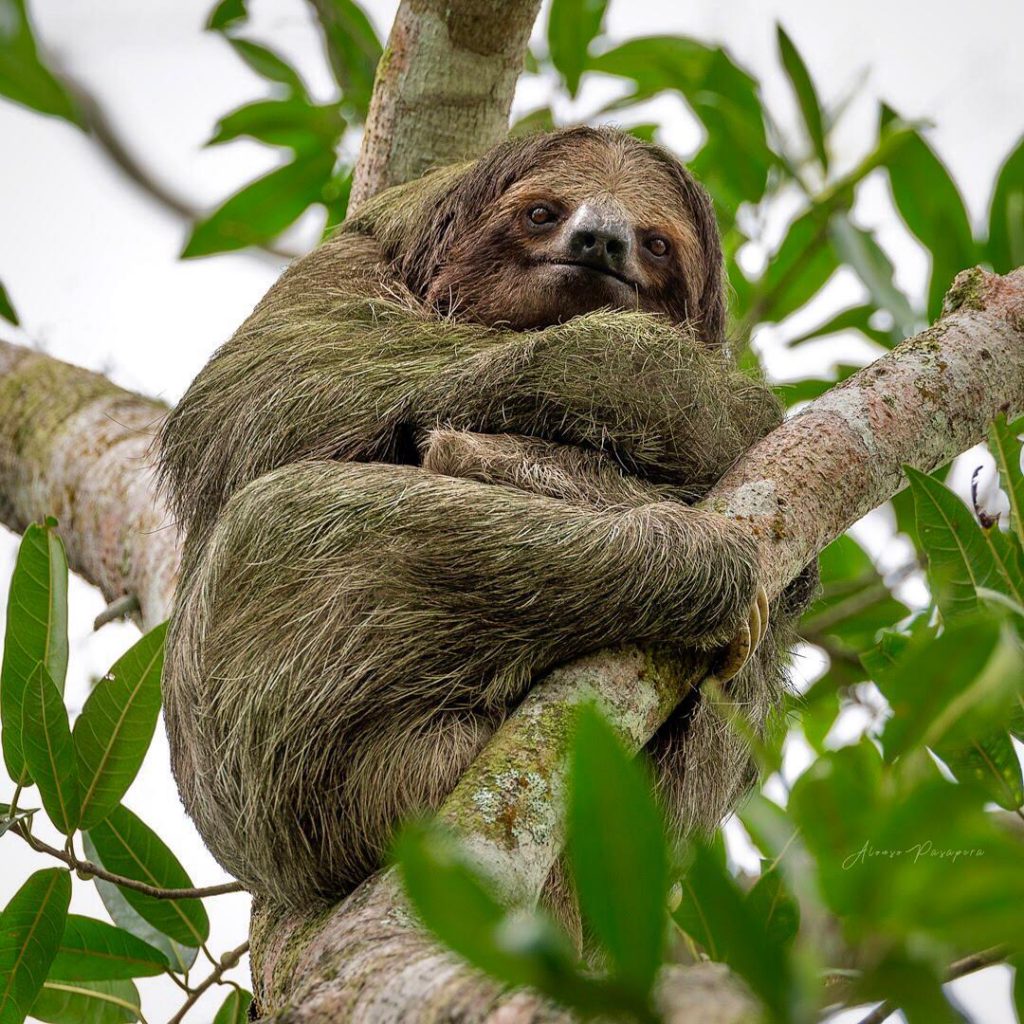
Sloth Quick Facts:
- It can take two weeks for a sloth to digest a meal.
- Sloths are primarily herbivores, though they do eat insects at times as well.
- Sloths’ fur earns its greenish tint from algae that grow there, providing extra camouflage.
Costa Rica’s Birds
Costa Rica is home to an impressive 903 species of birds, comprised of 82 different families and representing roughly 10% of the globe’s total bird population. Within this group is an amazing range of size, shape and color. From brown plumage to vibrant rainbow feathers, these birds bring our rainforests and our skies to life. Among them are over 50 species of hummingbirds, 16 species of owls, and 17 species of parrots.
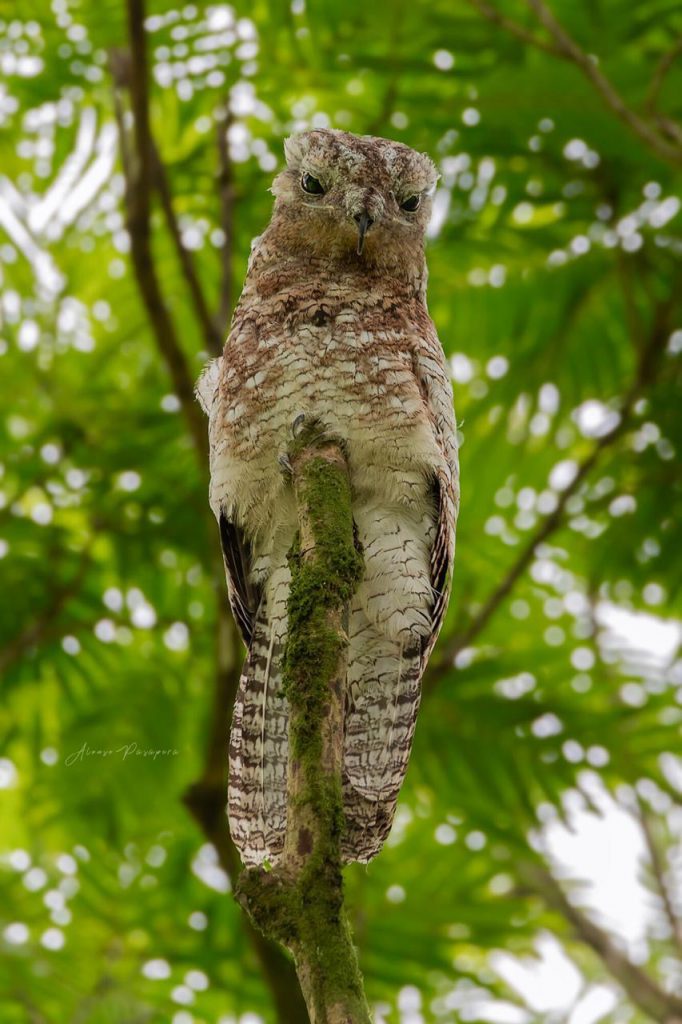
Bird Quick Facts:
- Of the 50 hummingbird species in Costa Rica, two are exclusive to the country: The Mangrove Hummingbird and the Coppery-headed Emerald.
- One of the most distinct birds in Costa Rica is the motmot, which displays impressive plumage and a racquet-tipped tail.
- The number of bird species found in the US and Canada combined is still only half the total number found in Costa Rica.
Baird’s Tapirs
Found in Central America, the Baird’s tapir is the largest neotropical mammal. Sadly endangered, these herbivores have a unique prehensile snout that can be used to grab fruit and on average reach 6.6 feet in length. Because of their dwindling numbers – fewer than 5,500 remain – they are most commonly spotted in Costa Rica’s national parks. We’re lucky to have several Baird’s tapirs that call the rainforest near our farm home, and have enjoyed catching glimpses of them on several occasions.
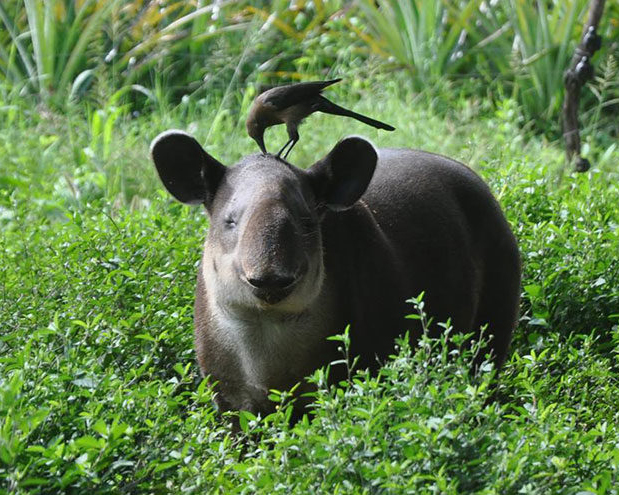
Tapir Quick Facts:
- As a species, tapirs have existed for 20 million years, earning them the nickname “living fossils.”
- Young tapirs have a spot and stripe pattern, not unlike a fawn.
- The Baird’s tapir is one of four species of tapir, all of which are endangered.
Jaguars
Like the tapir, hunting and deforestation pose a threat to the jaguar. This big cat is the only of its kind in Costa Rica and enjoys areas of dense tropical rainforest that our national parks provide. Because they prefer to remain hidden, jaguars are rarely spotted. However, we have seen one near our farm and, positively, four were seen hunting in Tortuguero National Park. Conservation efforts are vital in protecting these amazing animals and maintaining Costa Rica’s ecosystem.
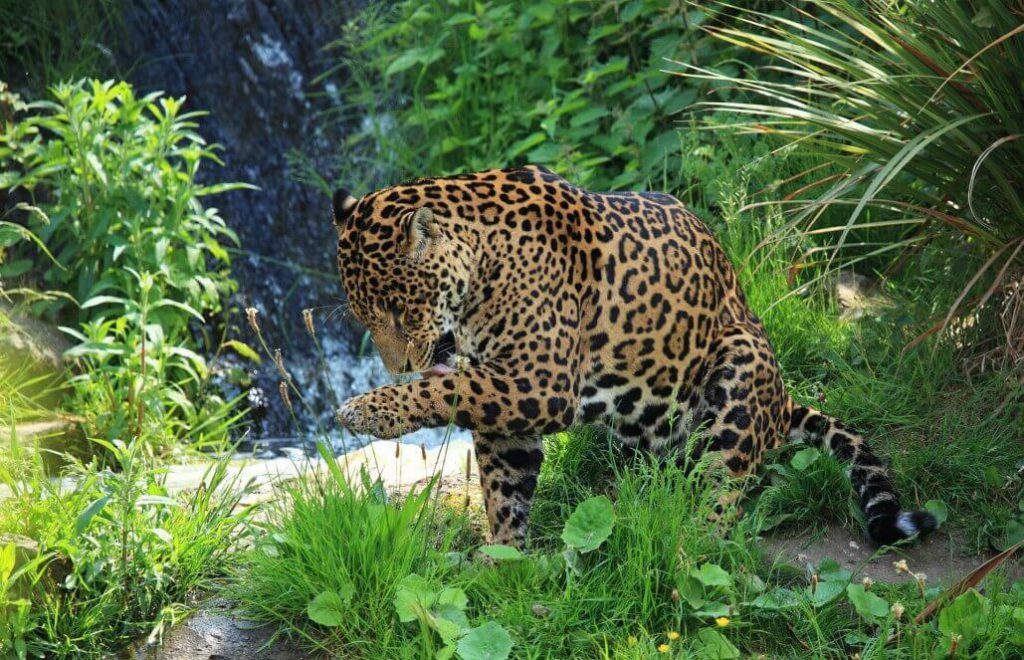
Jaguar Quick Facts:
- Jaguars are the third largest big cat in the world, following tigers and lions.
- Unlike leopards, the circular spots on a jaguar sometimes contain smaller black dots in the middle. Leopards will have only the larger circular marking.
- Black panthers are a variation of leopards (and jaguars) that have more melanin, giving them darker fur.
For more information about Costa Rica, sustainability, and more, sign up for our newsletter today.


